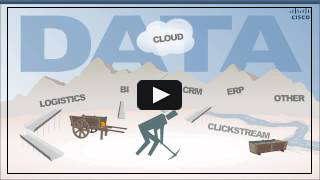
Say you’re in marketing, and you have been tasked to produce a short video, or a series of videos, to support or establish a position in the marketplace for a technology solution. Here are things to consider when planning an enterprise solution explainer video for one of these typical technology topics:
- New or improved service or solutionplanning an enterprise solution explainer video
- Reorganized/repositioned software suite or set of products
- New or undervalued product features
- New professional services
- Recently set up “center of excellence”
And let’s say you’re fortunate enough to have a deadline. (I say “fortunate” because I agree with legendary management consultant Peter Drucker that “Work without deadlines is not work assigned, but work toyed with.”)
Anyway, you’ve decided on using video for your enterprise technology solution 2-Minute Explainer because video is a great way to put things across quickly. Here are three things you need to consider in planning an enterprise solution explainer video.
What happens in the production process?
- Compression. Solution features and benefits that can be talked about for hours will be boiled down to two minutes or less
- Audience definition. For enterprise solutions, is can be a broad audience like “IT and business executives” or a pretty narrow one like “middleware admins.” What often happens is that halfway through the project, someone realizes that some new constituency needs to be taken into account.
- Rethinking. Subject matter experts are probably being asked to look at things in new ways. Some of this rethinking is likely to take place as the video develops.
- Politics. If there’s more than one team involved — it’s a suite of products, for example — managers will try to make sure their product gets top billing.
- Change. There’s a very good chance that a product being introduced or reintroduced is going to do some shape-shifting of its own several times between the start and the deadline. So you may need to re-imagine, rewrite, and execute new visual approaches quickly.
All these issues affect cost — and how you’ll meet the deadline.
What help should you demand from outside video production companies?
You get the most agility in deadline situations if the video team and the subject matter experts work directly together. Marketing will have the final say on “messaging” — but criticism and feedback from the people who know the subject best often produces better creative solutions faster. A creative team conversant with your technology will use subject matter experts’ scarce time more efficiently.
Outsiders can be valuable not just in trimming your message to length, but also in juggling those competing interests. For one thing outside professionals can often force decisions about content. Equally important, video experts can help to explain the visual impact of each piece in the story, which may not come across in the printed script, or even in storyboards. Outside video producers can analyze competitor videos and suggest visual and storytelling approaches for differentiating your solution.
Where does the money go?
One way to get a handle on these costs is to determine “how much does the viewer need to know?” in order to respond to your call to action. Another way is to determine whether it’s more important for your content to be comprehensive or entertaining. Obviously, you’ll strive for both, but explainer videos for enterprise solutions typically serve a number of different functions, including that of a video product sheet that conveys the most important features and benefits of the technology.
Figuring out how much product information you need to put across will tell you about cost, because most of the production costs for an explainer video about enterprise technology will be the labor spent creating visual content.
The least labor-intensive visual content is the talking head, or “kinetic” text, or a combination, because whoever is putting together the visuals can deploy their skills without learning anything new. The same is true if the talking heads are cartoon characters — the animator can convey emotion and enhance witty dialog without putting a lot of thought into the solution and how it actually works.
On the other hand, if you need to give prospects an understanding of a serious and complex technical matter, you need to bring credible diagrams and illustrations to life. This requires a lot of thought — and the creative team may not hit on the most effective visual solution on the first attempt. That takes time.
There are, of course, many other considerations with videos that need to pack a lot of content about a complicated solution into a very short time. But if you get these three right, you’re well on your way to a successful video that will accomplish its objective.



